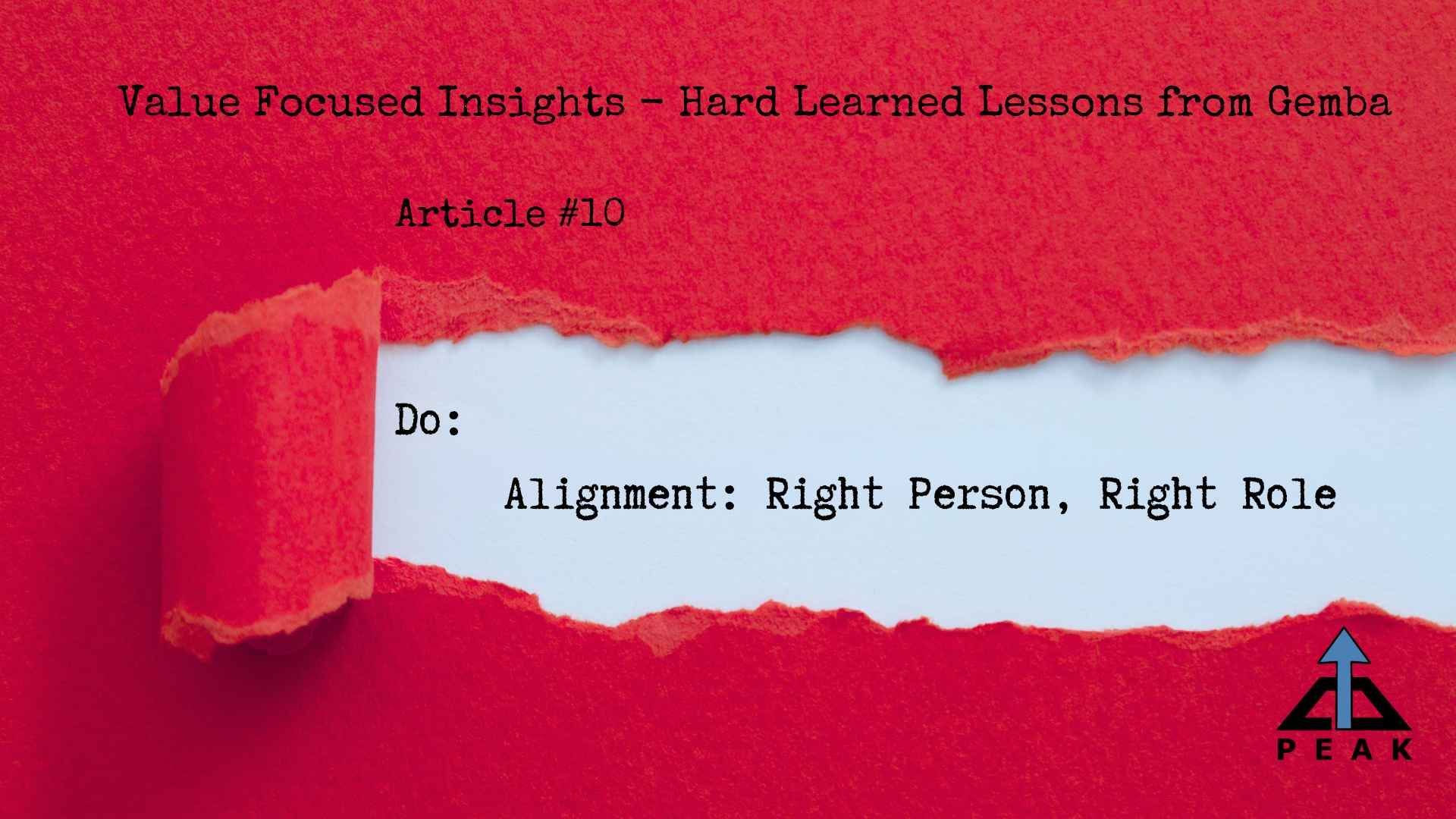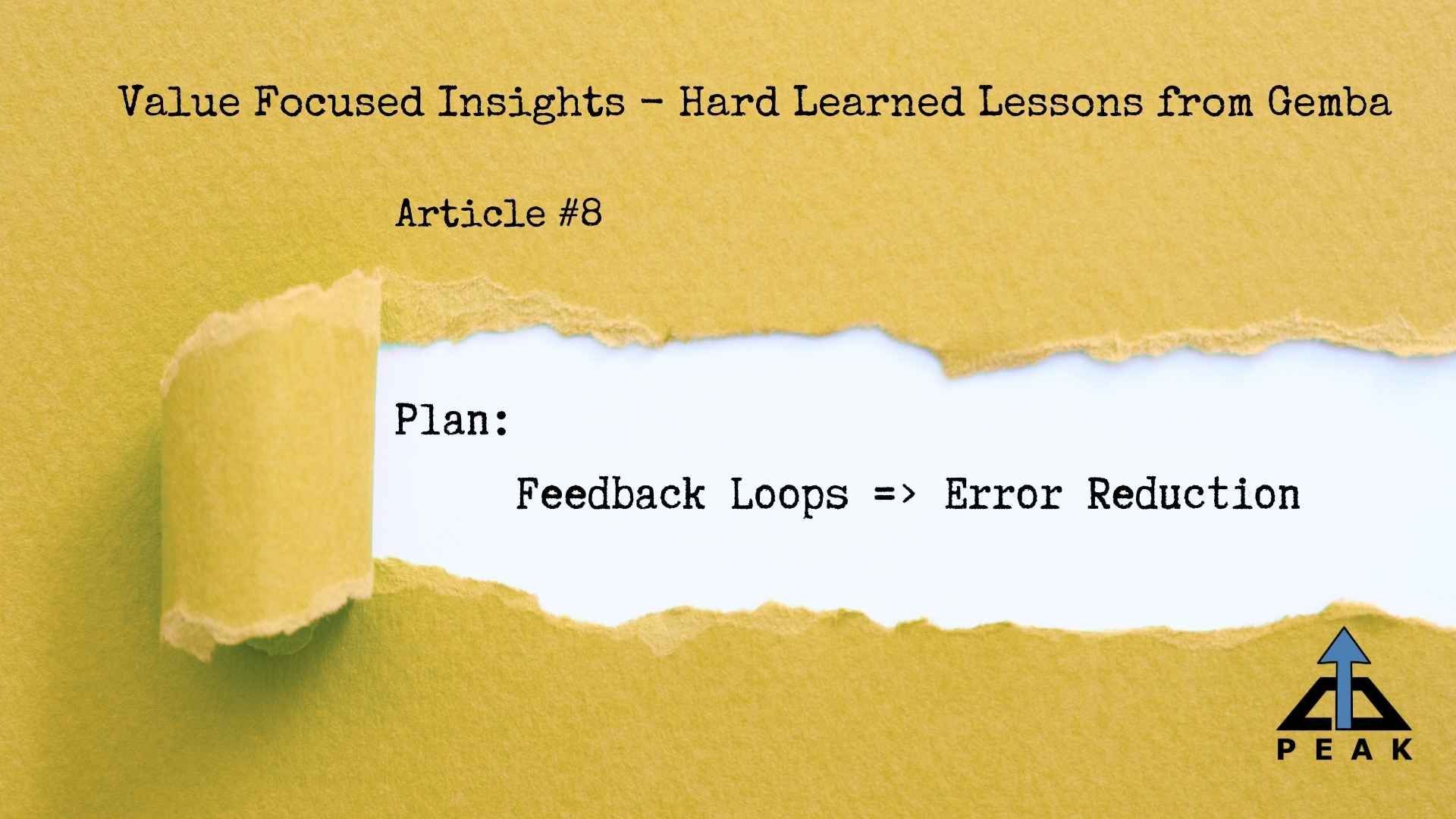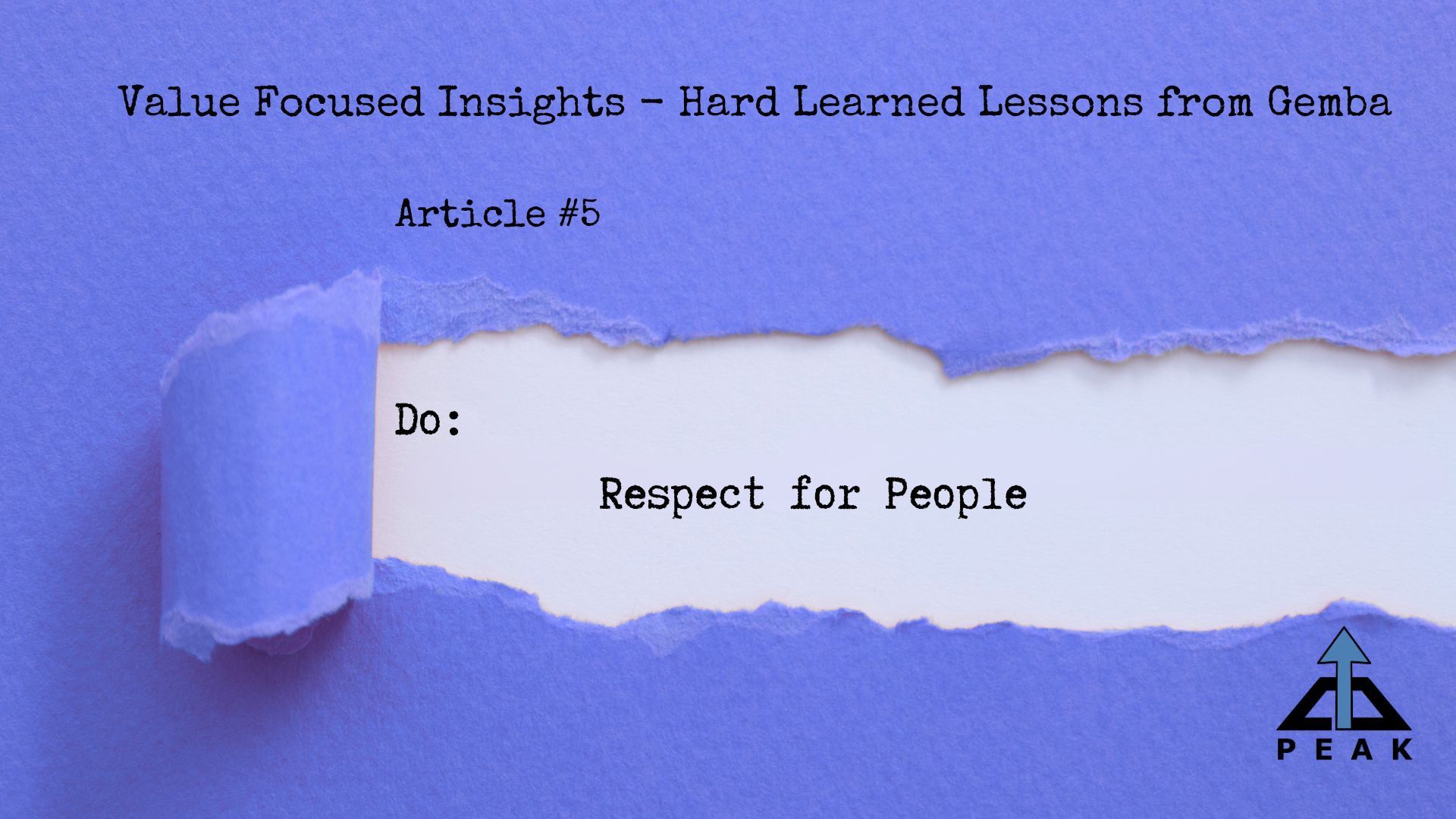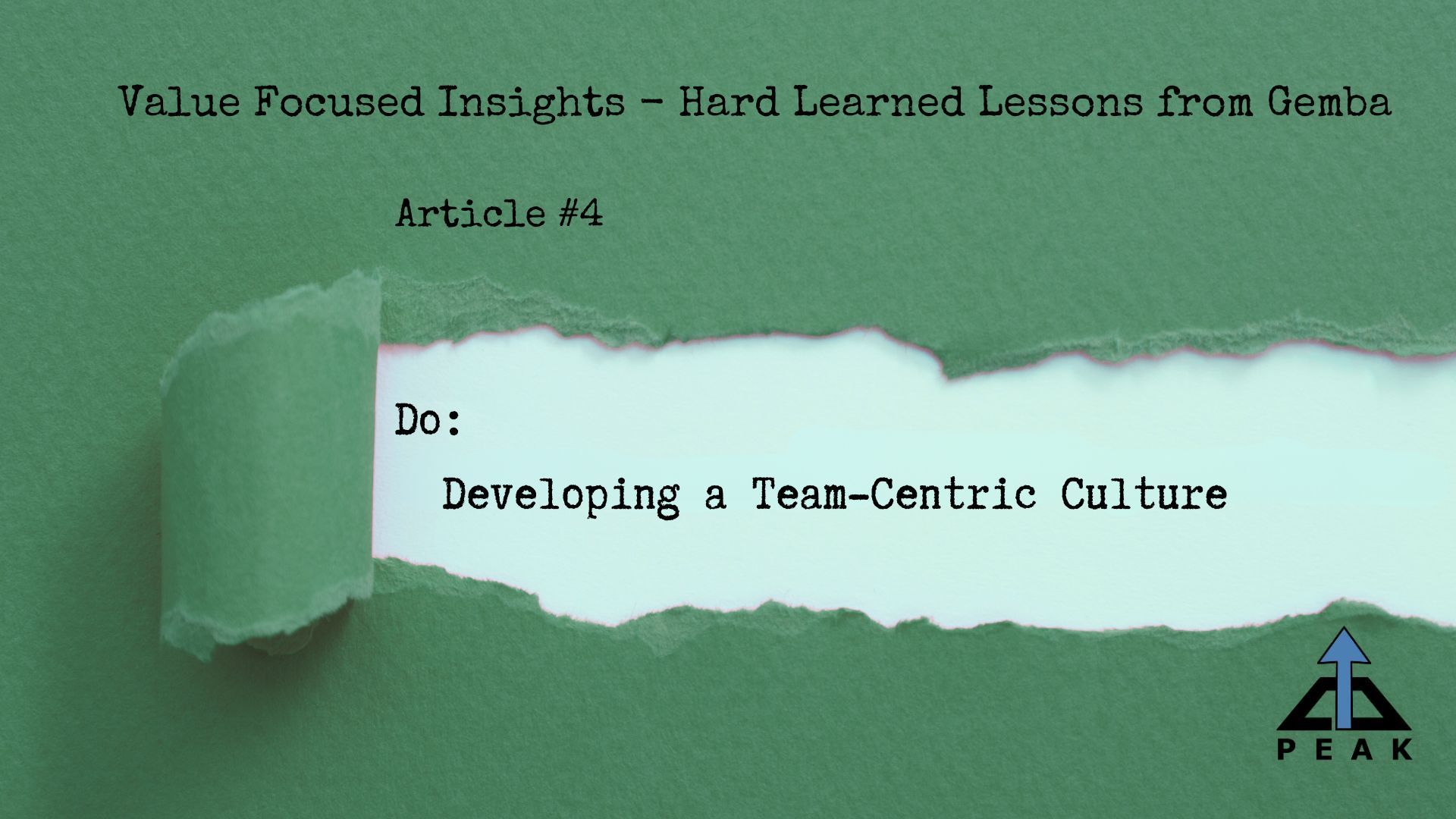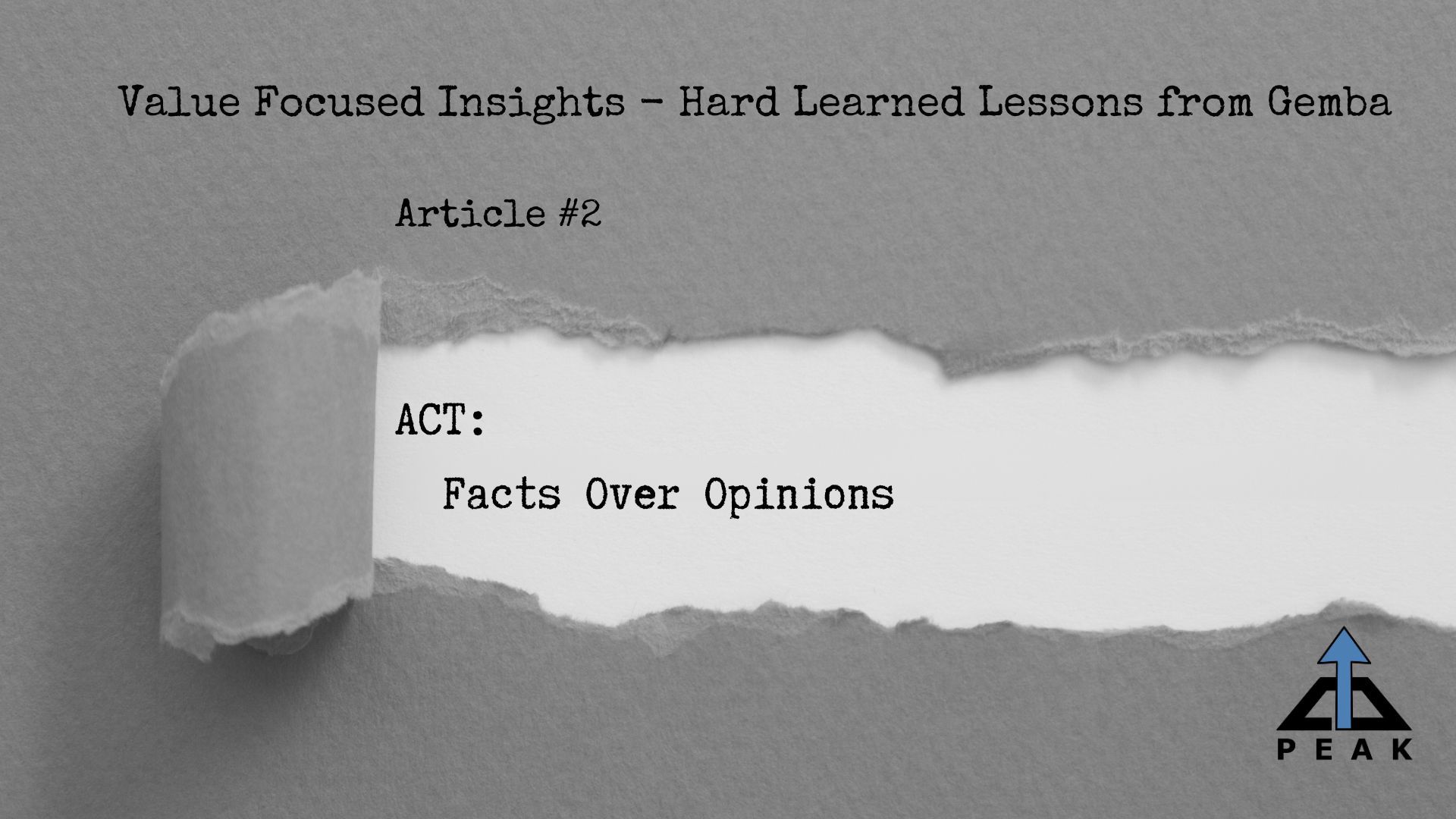Respect for People at the Gemba
Annah Godwin
Four key principles to grow and demonstrate respect for people at gemba

I have spent most of my career in continuous improvement, working as a Lean Engineer. My journey started right out of college and at the time I knew nothing about continuous improvement, but I quickly learned that it was a great match for me! In the early years, I was taught so much from my co-workers about the fundamentals of lean:
- The need for process stability before true improvement can begin.
- The connection between people and machinery.
- The pursuit of just-in-time delivery and when possible, one-piece flow.
However, the one cornerstone that struck the deepest chord with me was the cultural aspect, respect for people. When I reflect over the years, respect for people has provided some of the greatest successes with teams, most creative solutions for improvement, and a much deeper understanding of empowering people. Without it, I have seen irreversible damage to teams, broken trust of individuals, and a lack of heart within companies. Lack of respect at its extreme can destroy the hope for any type of improvement within the organization for years and years to come. Over the years, I have had more than one conversation with team members regarding their fear of continuous improvement and how it might lead to layoffs and cutbacks. It is a real fear because people have seen that as the end result. Let me just stop at this point and make a statement: If that is the goal of your continuous improvement activity, please don’t start the journey! The damage you do may last a lifetime.
So how does one develop and grow respect for people? Well, that is a complex and challenging question. I believe a key aspect of respect stems from our connection with a person. For some of us developing a connection comes easily and for others not so much. This doesn’t make some of us good and others bad, or some in touch and others out. I have seen people who related effortlessly and also ones that struggled, and at times I have found myself in both groups. At the core, I believe to develop respect one must build trust and demonstrate empathy. The gemba is a key place for that to occur.
Before we go any further let’s define gemba, which means the place where work occurs. Many people will use gemba or gemba walk as a synonym for going to the production area, shop floor, or workspace, but it is actually so much more. Let me give you my operational definition, it is the place where you go to learn what is really happening in the process that you want to improve. Let’s say you want to improve your shipping process, then go spend time in your shipping area, watching how trucks are loaded and unloaded, what paperwork is being completed, and how your products are staged and prepared for shipping. This is not the same as going and sitting in the shipping manager’s office discussing the process and problems. Maybe you want to improve patient flow in the emergency room, go spend time watching how patients move from one area of the ER to another. You can even perform gemba walks in an office setting by following the paper trail (both physical and electronic) for billing, order entry, or new employee onboarding. These are all examples of going to the gemba.
Now you have a little better understanding of the foundational blocks, respect for people and gemba. Let’s look at some tips I have found useful in connecting with people at the gemba.
- Talk with the person you want to observe before you begin your observations. I have completed countless observations and time studies and understand you don’t always have the luxury of choosing when to perform them, but allowing the person you are going to observe to have some say shows respect. During your initial conversation it is a good idea to explain what you are observing while reminding them it isn’t a performance evaluation. Sometimes the operator may indicate it isn’t a good time which probably relates to a couple of things: the line isn’t running well, or the operator is having a bad day. We all have an occasional bad day, so a little empathy and a few words of encouragement can go a long way in connecting with each other, making the time at the gemba a little easier. If, however, the person is reluctant due to current issues continue inquiring about the type of problems they are having. How long has it been running poorly? Are there any changes they have noticed to the raw material or the machinery? Has anyone from quality, engineering, maintenance, or management been out to talk with them about the issues? This open-format discussion demonstrates your interest and commitment to helping solve problems while letting you see firsthand the challenges they are facing. Whether you complete the observation at that time or come back later, thank them for being open to talk and that you appreciate their time. The next time you go work with them, you will find the conversation easier and discussion deeper.
- LISTEN to what they say!! Talking with the person and asking related questions will not only help you gather critical information on potential issues to improve and drive to deeper root cause understanding but provide a platform to build a relationship with someone that is knowledgeable about the day-to-day functions within the process. In most cases, the repetition of daily work allows someone to gather tremendous amounts of information about materials, machinery, the sights and sounds of the area, so when they speak about those areas, processes, and problems, we should listen. They may provide great recommendations for potential solutions, or act as a sounding board for solutions that haven’t worked in the past. Either way, listen, take notes, and thank them for their time and valuable feedback.
- Be part of the solution. As you talk with the person and listen to them, there may be issues and problems that are brought up that you could help resolve. If that happens, offer to provide support and help. Maybe you are not certified to run the line or maybe there are rules that limit your participation in processes, that’s OK! What are the things you can do to help fix the problem or provide support? Maybe it is as simple as following up with maintenance on a machine issue, or with quality on an issue. Possibly it is very complex and requires a lot of resources, data, and time. Either way, offering to follow-up and provide some support shows respect during their challenging times. Time spent digging into those issues opens the door for more learning opportunities about the machine, the product, the raw materials, and, most importantly, the person. There is one warning about offering support that brings me to the final point.
- Don’t make promises that you are unable to keep. If you tell the operator you will follow up on an item, then do so. If you tell them you will speak with someone in maintenance, quality, safety, etc., about the issues you observed, then do it. It may take some time to get the information you need, but once you have it then go back to them and give an update. In some cases, you will have successfully resolved the problem, however, most of the time the item still won’t be completed. Either way, the follow through with the person is a giant step in building a relationship that may prove to be extremely valuable.
At this point if you have not realized it building respect will take patience. It won’t be built overnight or in one interaction with continuous application of these helpful hints, you will find your ability to show respect will grow along with your reputation of being a respectful co-worker. It will also take time to build this trust, which is also a luxury many of us don’t have. But I am not sure how successful you, your teams, projects, department, or company will be if you don’t take the time and energy to foster a culture from the ground up that is built on respect. It is interesting that the more respect I give others, the more respect I receive. Which, in the end, isn’t that really the type of place we all want to work, grow, and thrive?
Points to ponder:
- How do show people respect at the gemba?
- Which skills do you need to focus on improving or adding to your regular routine?
- Can you think of someone you need to foster a deeper respect for or repair a broke respect?
Take a few minutes to jot down a few things you would like to try this week.
Peaks and Valleys.....
